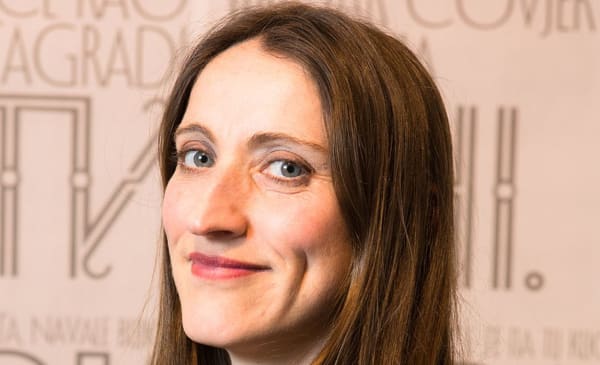Curator Sarah Campbell talks about what's available in the Museum and Study Collection
The Museum & Study Collection houses more than 25,000 objects on 1,000 metres of shelving. We also have a comfortable study room where visitors can engage with our fascinating collections. With such a broad range of material there's something to interest everyone and we welcome visitors from both within and outside the university.
Current students: you are welcome to book an individual study room visit to see the collection. Please try to do this a week in advance. You can also browse our online catalogue at collections.arts.ac.uk.
Head of Museum Judy Willcocks talks about the Collection
The history
The museum was set up in the 1890s, in a world before the Internet or even decent colour reproductive photography, so the only way to show students how amazing some objects were was to have them for real.
In the late 1800s and early 1900s the college had a budget to buy things it thought would be good for students to see and the resulting collection is like a mini V&A with early printed books and manuscripts, Japanese wood engravings, embroideries, textiles... Like lots of art schools we were buying these to show students what the best, most innovative, forward thinking designers were doing.
That’s what we continue to do today, but now we don’t buy work by just anyone, we focus on staff, students and alumni. We buy work from the degree shows, and sometimes we buy work retrospectively as well.
Teaching the students
We do exhibitions in the Lethaby Gallery and we have a display window on the Street. We’re constantly curating new exhibitions and often we work with students to create the displays. It’s an opportunity for students to see things from the collection but also to learn about curating and object handling.
We have a good searchable online catalogue, loads of images and information that students can look up. The point of a teaching collection is to teach through object handling. That means you have to be a bit more proactive as a student and book an appointment, but it also means you have access to some pretty amazing or rare material.
For me object based learning is a very special thing. Lots of research suggests that creative peoples learn through doing activities, looking, touching… it’s can be easier to get things by handling them than by sitting in a lecture theatre listening to a speaker.
Building the Collection
I do not, generally, pick the work that we buy from degree shows. The collection covers every subject taught here, so there is no way I could be a specialist in all of those. I can go to degree shows and spot things that I think are interesting but I leave it to Course Leaders and Deans to decide what we buy.
What’s interesting is that you get waves of stuff coming into the collection. For example, when the college got a laser cutter, suddenly everything was laser cut, no matter what course the students were coming from. And now of course it’s 3D printing.
I know lots about the context of objects and how they came to be in the collection and why they are an important part of the design history, but often students coming in have a greater understanding of the way the object is made. Interacting with students here is more about sharing knowledge than me doing all the teaching.
Student projects
Some projects we do are based on very loose briefs: I will share some interesting objects from the collection with the students, and then they go away and create a work of art inspired by what they have seen.
We also get students who book an appointment with the collections for a specific reason. We have a very good textiles collection, and we’ve got some fabulous examples of soothe design process so students come and interact with that.
And then there are bigger, more formal projects with students. At the moment I’m working with Fashion Communication and Fashion Journalism students who are curating the museum’s display window. I could curate the window myself, but I really wanted the students to have an opportunity to use their imagination and learn new skills.
My starting point for doing an exhibition can be a bit pedestrian – thinking more about time and budget than a flight of fancy. If you get a team of people in their early 20s who are spending all day, every day, thinking creatively, they immediately come up with amazing ideas. When the students pitched their ideas I was really proud of the research they’d done and the concepts they’d dreamed up. Now I’m working with a ‘winning’ team to do the window for real.
Judy’s favourite objects
I love some of the older stuff, because it is such a privilege to have it here: the illuminated manuscripts, the early printed books, and we have an amazing Portolan chart by Giorgio Sideri from 1570.
And I have a drawer full of William Morris wallpaper samples I go to when I’m having a down day: nothing is so bad that you cannot be cheered up by a drawer full of William Morris’ samples.
And because we buy work from the degree shows every year, for me, it is amazing to see how new technologies sweep through. People like Maria Katrantzou using digital printing. We have a dress that was purchased from her degree show, back when digital printing was still quite expensive and special, and for me that’s a marker in time.
